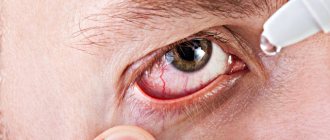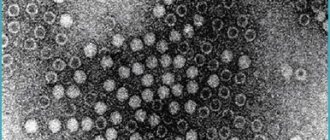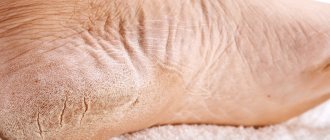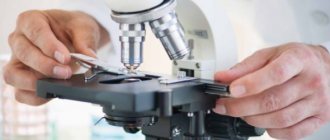Causes of erythema multiforme exudative
Modern dermatology is not ready to clearly identify the objective causes and mechanisms of development of exudative erythema multiforme. It is known that approximately 70 percent of people have a certain focus of chronic infection: sinusitis, otitis, chronic tonsillitis, pulpitis, pyelonephritis, periodontal disease and many other diseases, as well as increased sensitivity to antigens. In these patients, during an exacerbation of exudative erythema multiforme, a decrease in immunity is recorded. As a result, there was an assumption that the onset and exacerbation of the disease are caused by immunodeficiency, which develops rapidly against the background of focal infections in interaction with some complicating and provoking factors, namely:
- hypothermia;
- sore throat;
- ARVI.
Erythema multiforme is often associated with herpetic infections.
The main and most common cause of the toxic-allergic form of the disease is intolerance to certain medications:
- sulfonamides;
- barbiturates;
- tetracycline;
- amidopyrine and others.
In addition, the disease may appear after administration of serum or vaccine. From the point of view of allergology, exudative erythema multiforme is a mixed type hyperreaction, combining signs of immediate and delayed hypersensitivity.
Migratory type pathology
Infectious dermatosis in the form of migratory erythema after a tick bite initially looks like a slight redness, which quickly increases in size and becomes ring-shaped with a clear hyperpigmented border. Unpleasant sensations, itching or burning may occur in the affected area. The stain persists for several days, in some patients up to a month. If left untreated, the disease becomes chronic, which is difficult to treat.
The disease is caused by the bacterium Borrelia, which is carried by ticks. The pathogen spreads in the body through the lymphatic and circulatory systems, penetrates various organs and other areas of the skin. The joints, muscles, and nerve tissues are most often affected, and less commonly, the tissues of the heart muscle and the lining of the brain.
Are you experiencing symptoms of erythema?
Only a doctor can accurately diagnose the disease. Don't delay your consultation - call
Symptoms of exudative erythema multiforme
The infectious-allergic variant of exudative erythema multiforme has an acute onset of the disease, characterized by the following symptoms:
- general malaise;
- elevated temperature;
- headache;
- muscle pain;
- sore throat;
- arthralgia;
- rashes after 1-2 days against the background of general changes.
In approximately five percent of cases, the disease is localized only on the oral mucosa, and one third of patients have damage to the skin and oral mucosa. There are rare cases when exudative eczema multiforme affects the genital mucosa. After the rash appears, the general symptoms of the disease gradually disappear, but may persist for up to three weeks.
Skin rashes with this disease are usually located:
- in the back of the hands and feet;
- on the soles and palms;
- on the extensor areas of the elbows and forearms;
- in the areas of the legs and knees;
- in the genital area.
The rashes are red-pink, swollen, flat papules with clear boundaries. They grow rapidly, reaching from two millimeters to three centimeters in diameter. The central part of the papules sinks, and its color becomes blue. Blisters with bloody or serous contents may also appear here. In addition, the same bubbles appear on apparently healthy areas of the skin. The polymorphism of rashes is due to the fact that blisters, pustules and spots are present on the skin at the same time. In most cases, the rash is accompanied by a burning sensation and sometimes itching.
In case of damage to the oral mucosa, elements of exudative erythema multiforme are localized on the cheeks, lips and palate. At first, the rashes are areas of limited or diffuse redness of the mucous membrane, and after 1-2 days, blisters appear in areas of exudative erythema multiforme, which open after the next two to three days and form erosion. Merging, erosions cover the entire surface of the oral mucosa, covering it with a gray-yellow coating. When you try to remove the plaque, bleeding occurs.
There are cases when exudative erythema multiforme affects the oral mucosa with several elements without any pronounced pain. But practice shows that sometimes extensive erosion of the oral cavity occurs, preventing the patient from taking food, even in liquid form, and talking. In this case, bloody crusts appear on the lips, preventing the patient from opening and closing his mouth normally and painlessly. These rashes begin to disappear after two weeks, and finally disappear after about a month. The entire process on the oral mucosa can last for one and a half months.
Typically, the toxic-allergic form of exudative erythema multiforme does not have initial general signs and symptoms. There may be an increase in body temperature immediately before the rash. The toxic-allergic form, in terms of the characteristics of the elements of the rash, is practically no different from the other form of erythema - infectious-allergic. It is widespread and fixed; in both cases, infectious rashes affect only the oral mucosa. And with a fixed variant of the disease, during relapses of exudative erythema multiforme, rashes appear in the same places, as well as in new ones.
This disease is characterized by a relapsing course followed by exacerbation in the autumn and spring periods. In the toxic-allergic form of the disease, seasonality does not play a special role, and in some cases, exudative erythema multiforme is characterized by a continuous course due to constantly recurring relapses.
Types of pathology
Erythema is classified according to the type of vessels affected:
- active - occurring with a sharp expansion of the lumen of arterial vessels, accompanied by an acute inflammatory process, with bright redness of the skin, increased temperature, swelling and soreness of the skin;
- passive - formed when blood stagnates in the venous vessels during their expansion, accompanied by the appearance of bluish-red or burgundy spots, mainly accompanying inflammation with a chronic course.
Each variety is caused by different causative factors and requires a separate therapeutic approach.
Based on etiology, the following types of erythema are distinguished:
- non-infectious - which are the physiological reaction of the body to external or internal irritants (solar ultraviolet radiation, critically high or low temperature, allergens, etc.);
- infectious - caused by the penetration of infection into the skin capillaries through the surface of the epidermis, from the systemic bloodstream or through the mucous membrane.
Non-infectious manifestations usually do not require special treatment, as they go away on their own after the action of the provoking factor ceases. Infectious reactions are expressed in an inflammatory process that occurs in an acute or chronic form and is accompanied by certain symptoms.
Diagnosis of exudative erythema multiforme
To diagnose the disease, a consultation with a dermatologist requires a thorough examination of the rash and dermatoscopy. When collecting anamnesis, special attention should be paid to possible connections with any infectious processes, as well as the use or administration of medications. To confirm the diagnosis of exudative erythema multiforme, as well as to exclude any other disease, it is necessary to take fingerprint smears from the mucous membrane and from the affected areas of the skin.
Exudative erythema multiforme is differentiated from pemphigus, erythema nodosum, and disseminated form of systemic lupus erythematosus. Several of the following factors allow separating erythema multiforme from pemphigus:
- rapid dynamics and changes in the rash;
- negative reaction to Nikolsky's symptom;
- complete absence of acantholysis in fingerprint smears.
If the patient has a fixed form of exudative erythema multiforme, a differential diagnosis should be made with syphilitic papules. Some signs identified during the study make it possible to exclude syphilis, these are:
- complete absence of pale treponema during dark field examination;
- negative RPR, RIF and PCR reactions.
Nodular pathologists
The causative agent of erythema nodosum is usually streptococcus, and less often - some other infections. It often occurs against the background of tonsillitis, scarlet fever, and tuberculosis. You can recognize it by the following signs:
- rashes of bright red color, with bulges forming in the subcutaneous layer;
- asymmetrically located spots;
- gradual bluing of the spots, then yellowing, similar to the resorption of bruises;
- presence of fever;
- painful sensations and itching in the affected areas of the skin;
- the presence of multiple seals on the legs.
The patient is prescribed a course of antibiotics, antihistamines, as well as external treatment with antiseptics.
Causes
Erythema can be both physiological and non-physiological in nature.
In the first option, erythema may occur as a result of various psycho-emotional states or short-term abnormal phenomena. This kind of redness goes away very quickly on its own and is not the cause of certain disorders in the body. If erythema is of non-physiological origin, then it can be considered a separate disease, which is accompanied by prolonged redness of the skin and the presence of an inflammation process. Erythema can have many causes. These are viruses, infections, various diseases of the skin and connective tissues, as well as physiotherapeutic procedures that involve the use of sources of thermal or chemical action. Also, causes of erythema may include poor circulation, allergic reactions, regular rubbing of the skin, exposure to cold or chemicals.
Often reddened areas of the skin are a consequence of Crohn's disease, ulcerative colitis and pregnancy. Erythema can also be caused by medications such as penicillin, hormonal contraceptives (pills), non-steroidal anti-inflammatory drugs, anticonvulsants and sulfa drugs.
Symptoms
Before the appearance of rashes and during the course of the disease, there is a deterioration in the general condition, malaise, increased body temperature, fatigue, pain in the joints, burning and soreness in the mouth, and difficulty eating.
Edema spots, papules, vesicles, and blisters appear. Polymorphism of elements is primary. Very rarely there is a monomorphic blistering rash. Characteristic plaques spread along the periphery like a roller (cockade) and sink in the center (cockade-shaped rashes). In the center of the plaque is violet-bluish in color, and along the periphery - pink-red.
Bubbles and vesicles with serous, less often hemorrhagic contents are surrounded by an inflammatory rim. Blisters and vesicles open, serous whitish or grayish-yellow, as well as hemorrhagic crusts form on the surface of the erosions. Scraps of blisters and vesicles appear along the edges of the erosions; Nikolsky's symptom is negative. Rashes in the mouth are painful.
The location of the rashes is characteristic on the back of the hands, feet, extensor surfaces of the limbs, palms and soles. Often the elements of the rash are arranged in the form of garlands, arcs, and rings.










